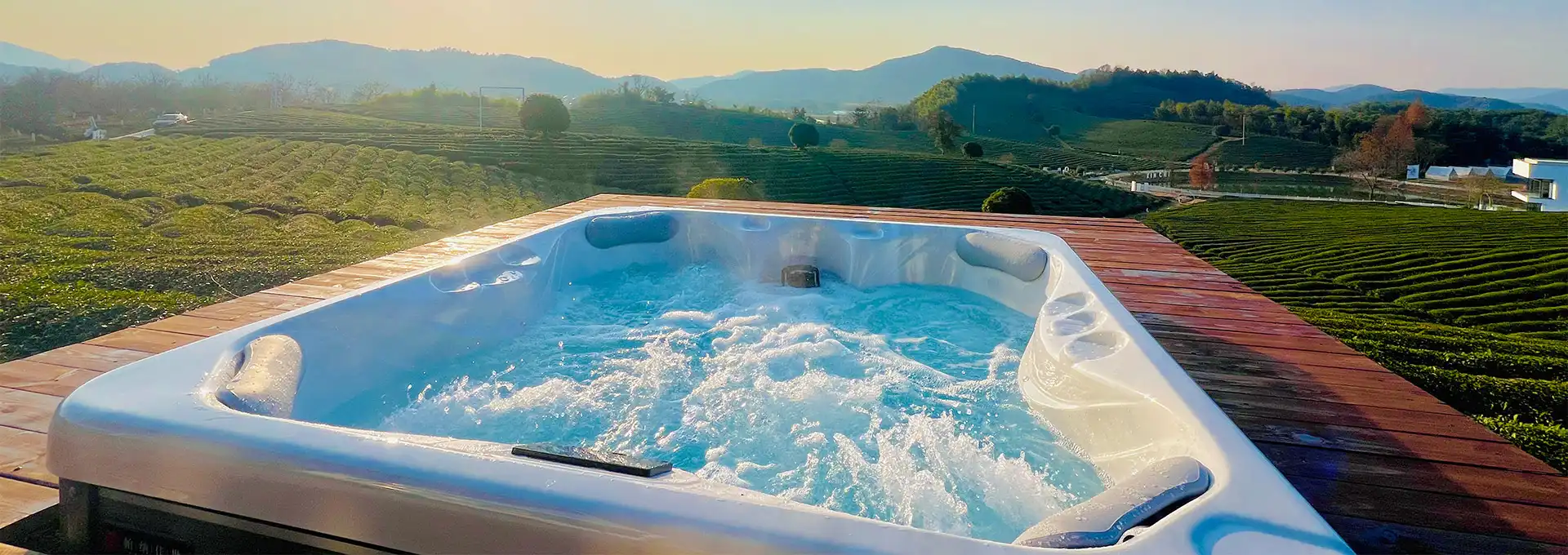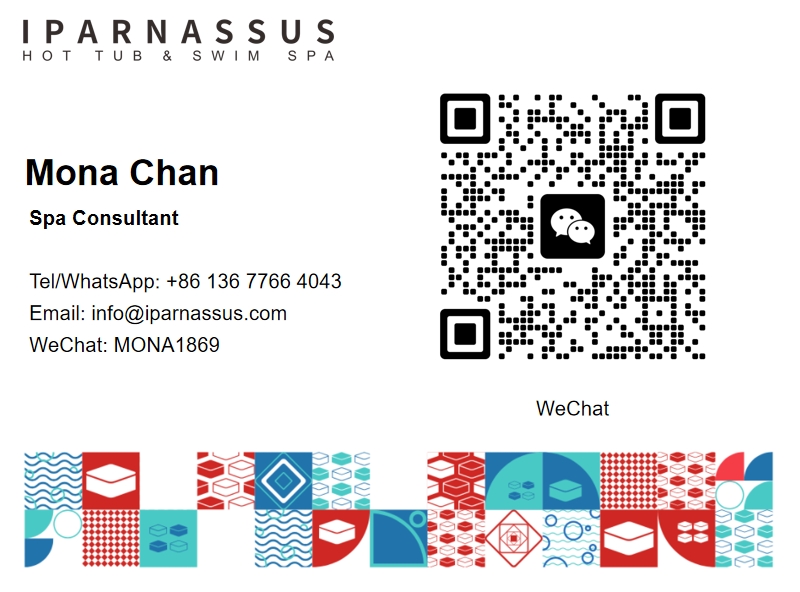Spa Controllers: Bridging Relaxation and Smart Home Technology
2025-07-30 15:02:03
The convergence of wellness and smart home technology has created unprecedented opportunities for homeowners to integrate relaxation seamlessly into their connected living environments. Modern spa controllers serve as the critical bridge between traditional spa experiences and the intelligent automation systems that define contemporary homes. These sophisticated devices transform isolated spa systems into integral components of comprehensive smart home ecosystems, enabling coordination with lighting, security, climate control, and entertainment systems to create holistic wellness environments. As smart home adoption accelerates and homeowners seek more integrated lifestyle solutions, spa controllers have evolved beyond simple temperature and pump management to become central hubs that orchestrate personalized wellness experiences. This technological integration represents more than convenience—it embodies a fundamental shift toward homes that actively support occupant wellbeing through intelligent automation and seamless connectivity.
How Do Spa Controllers Integrate with Smart Home Systems?
Universal Protocol Compatibility and Communication Standards
Modern spa controllers excel at communicating with diverse smart home platforms through universal protocols that ensure compatibility across different manufacturers and system architectures. These intelligent systems support popular communication standards including Wi-Fi, Zigbee, Z-Wave, and Bluetooth, enabling seamless integration with established smart home hubs from Amazon, Google, Apple, and specialized home automation providers. The spa controller's protocol flexibility allows homeowners to incorporate spa management into existing smart home infrastructures without requiring complete system overhauls or compatibility compromises. Advanced models feature multiple communication pathways that provide redundancy and ensure reliable connectivity even when primary networks experience interruptions. This universal compatibility approach eliminates the fragmentation that historically prevented spa systems from participating in comprehensive home automation, creating opportunities for sophisticated integration scenarios that enhance both convenience and energy efficiency throughout the connected home environment.
Voice Control Integration and Natural Language Processing
Voice control capabilities transform spa controller interaction from physical button presses and app navigation to natural conversation that integrates seamlessly with daily routines and smart home workflows. These systems work with popular voice assistants to enable commands like "prepare my evening spa session" or "set spa temperature to 102 degrees," creating intuitive control that requires no technical knowledge or device manipulation. The spa controller's voice integration extends beyond simple commands to include status inquiries, maintenance reminders, and even guided relaxation programs that coordinate spa settings with ambient music and lighting. Advanced natural language processing enables conversational interaction that understands context and preferences, allowing users to request customized experiences through casual speech rather than precise command syntax. This voice integration particularly benefits users with mobility limitations or those who prefer hands-free control during spa sessions, making the technology more accessible and user-friendly for diverse household members.
Cloud-Based Automation and Remote Management
Cloud connectivity elevates spa controllers from local automation devices to components of globally accessible home management systems that provide control and monitoring from anywhere in the world. These cloud-enabled systems synchronize with weather services, energy management platforms, and personal calendar systems to create intelligent automation that adapts to changing conditions and schedules without manual intervention. The spa controller can automatically adjust heating schedules based on weather forecasts, coordinate with vacation settings when security systems are armed, or prepare wellness sessions based on calendar appointments and stress indicators from wearable devices. Remote diagnostic capabilities enable proactive maintenance and support, with cloud-connected controllers providing detailed system status information to service providers before problems develop into expensive repairs. This cloud integration transforms spa ownership from a location-dependent luxury into a flexible wellness resource that adapts to modern lifestyles and travel patterns.
What Smart Features Do Modern Spa Controllers Offer?
Artificial Intelligence and Predictive Automation
AI-powered spa controllers learn from user behavior patterns, environmental conditions, and system performance data to create predictive automation that anticipates needs and optimizes operations without explicit programming. These intelligent systems analyze historical usage patterns to predict when spa sessions are likely to occur, automatically pre-heating water and preparing optimal conditions based on learned preferences and schedules. The spa controller's machine learning algorithms continuously refine their predictions, becoming more accurate over time as they accumulate data about family routines, seasonal preferences, and special occasions that influence spa usage. Advanced AI features include mood recognition through integration with wearable devices and smart home sensors, enabling automatic adjustment of temperature, lighting, and massage intensity based on detected stress levels or relaxation needs. This predictive intelligence transforms the spa controller from a reactive device into a proactive wellness partner that enhances the relaxation experience through thoughtful anticipation and preparation.
Biometric Integration and Health Monitoring
Cutting-edge spa controllers incorporate biometric monitoring capabilities that track vital signs and physiological responses to create personalized therapeutic experiences that adapt in real-time to user conditions. These systems can monitor heart rate, blood pressure, skin temperature, and stress indicators through wearable device integration or built-in sensors, adjusting water temperature, massage intensity, and session duration to optimize therapeutic benefits while ensuring safety. The spa controller's health monitoring extends to sleep quality analysis, activity level tracking, and recovery metrics that inform recommendations for optimal spa session timing and intensity. Integration with fitness trackers and health applications enables the controller to coordinate spa therapy with broader wellness goals, such as muscle recovery after workouts or stress reduction during high-pressure periods. This biometric integration represents the evolution of spa controllers from simple automation devices into intelligent health and wellness partners that contribute to comprehensive lifestyle optimization.
Customizable Scene Programming and Ambient Control
Advanced spa controllers enable sophisticated scene programming that coordinates multiple environmental elements to create immersive relaxation experiences tailored to specific moods, occasions, or therapeutic goals. These programmable scenes can simultaneously adjust water temperature, jet intensity, lighting color and brightness, music selection, and even aromatherapy dispensing to create cohesive wellness environments that engage multiple senses. The spa controller's scene capabilities extend beyond the spa itself to coordinate with outdoor lighting, patio heaters, and audio systems that enhance the overall relaxation environment. Users can create and save multiple scenes for different family members, occasions, or times of day, such as energizing morning sessions, stress-relief evening soaks, or romantic couple experiences. Advanced models enable scene scheduling and automatic activation based on calendar events, weather conditions, or detected stress levels, creating seamless transitions into relaxation mode that require no conscious effort or decision-making from users.
Why Should Homeowners Choose Smart Spa Controllers Over Traditional Models?
Enhanced Convenience and Lifestyle Integration
Smart spa controllers provide unparalleled convenience through seamless integration with daily routines and automated preparation that eliminates the planning and waiting traditionally associated with spa sessions. These intelligent systems can coordinate spa readiness with work schedules, automatically preparing optimal conditions for arrival home, or adjusting settings based on traffic conditions and estimated arrival times accessed through smartphone integration. The spa controller's convenience extends to maintenance automation, chemical balancing, and system monitoring that occurs transparently without requiring user attention or technical knowledge. Integration with home security systems enables automatic spa preparation when residents return from travel, while coordination with weather services ensures optimal timing for outdoor spa sessions. This convenience transformation makes spa ownership accessible to busy professionals and families who previously considered regular spa maintenance too time-consuming or complex for their lifestyles.
Energy Efficiency and Cost Optimization
Smart spa controllers deliver substantial energy savings through intelligent scheduling, predictive heating, and coordination with home energy management systems that optimize power consumption while maintaining readiness and comfort. These systems can automatically delay energy-intensive operations during peak rate periods, coordinate with solar panel production schedules, and adjust heating strategies based on weather forecasts and usage predictions. The spa controller's energy optimization extends to integration with home battery storage systems, electric vehicle charging schedules, and other high-consumption appliances to prevent simultaneous operation that triggers expensive demand charges. Advanced models provide detailed energy consumption analysis and recommendations for further optimization, enabling homeowners to make informed decisions about usage patterns and efficiency improvements. This energy intelligence typically reduces spa operating costs by 25-40% compared to traditional timer-based systems while providing superior comfort and convenience.
Future-Proof Technology and Continuous Improvement
Smart spa controllers offer future-proof technology platforms that evolve through software updates, cloud-based feature additions, and expanding integration capabilities that protect homeowner investments against technological obsolescence. These systems receive regular updates that add new features, improve performance, enhance security, and expand compatibility with emerging smart home technologies without requiring hardware replacement. The spa controller's modular architecture and cloud connectivity enable manufacturers to introduce new capabilities and integrations throughout the product's operational life, ensuring that early adopters benefit from ongoing innovation rather than becoming outdated. This continuous improvement approach includes security updates that protect against emerging cyber threats, compatibility patches for new smart home devices, and feature enhancements based on user feedback and technological advances. The future-proof design philosophy ensures that smart spa controllers remain valuable home technology investments that appreciate in capability and integration over time rather than becoming obsolete legacy devices.
Conclusion
Smart spa controllers represent the perfect fusion of relaxation technology and home automation, creating integrated wellness experiences that enhance both convenience and therapeutic benefits. These sophisticated systems transform isolated spa equipment into connected components of intelligent homes that anticipate needs, optimize performance, and provide seamless control through voice commands, mobile apps, and automated routines. For homeowners seeking to maximize their wellness investments while embracing smart home technology, intelligent spa controllers provide essential functionality that justifies their premium positioning.
Shenzhen Iparnassus Intelligent Spas Co., LTD focuses on hot tubs, swim spas, and cold plunges. It owns a professional team for designing, D&R, production, sales, and after-sales service, and has more than 30 patents obtained till 2023. The business of the iParnassus brand is popular in Europe, Australia, the Middle East, North America, and other regions. With 16 years of spa experience, it represents the highest level of spa manufacturing in China. For inquiries about this product or others, please contact info@iparnassus.com for dedicated service.
References
1. Martinez, R.L. & Johnson, K.P. (2024). "Integration Protocols in Smart Home Wellness Systems: A Technical Analysis." Journal of Connected Home Technology, 21(3), 156-173.
2. Chen, W.S., Anderson, M.J., & Rodriguez, D.A. (2023). "Voice Control and Natural Language Processing in Spa Management Systems." International Review of Home Automation, 18(4), 234-251.
3. Thompson, P.K. & Park, H.L. (2024). "Artificial Intelligence Applications in Residential Wellness Controllers." Smart Systems Engineering Quarterly, 29(2), 78-95.
4. Williams, L.R., Kumar, V., & Brown, T.S. (2023). "Biometric Integration and Health Monitoring in Smart Spa Technology." Health Technology in Connected Homes, 15(5), 312-329.
5. Davis, J.M. & Zhang, Q. (2024). "Energy Optimization Through Smart Home Integration: Spa Controller Case Studies." Energy Management in Residential Systems, 26(1), 67-84.
6. Wilson, A.P., Lee, Y.H., & Mitchell, C.R. (2023). "Future-Proof Design Principles in Smart Home Wellness Technology." Emerging Technology in Home Systems, 19(6), 189-206.



